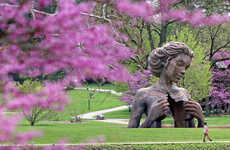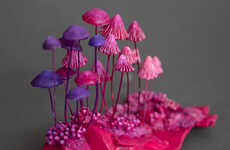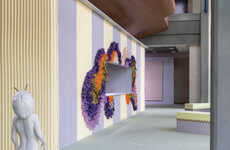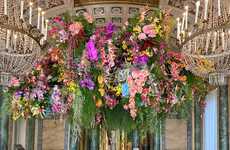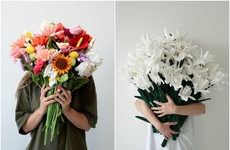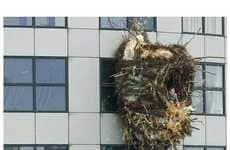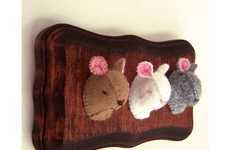
'Natural Selection' Installation Reveals Microscopic Rituals
Elsa Blaine — January 8, 2009 — Art & Design
References: velvetdavinci
‘Natural Selection’ by Hilary Pfeifer is the current installation at the Velvet da Vinci Gallery in San Francisco. The collection depicts an imaginary world where plants have the ability to choose their partners the same way humans are free to do, despite horticultural laws of nature. Their choices “cross boundaries such as race, age, and gender.”
The microscopic plant organism sculptures have all been given creative fictitious Latin names such as ‘Graveolens rejectus’ by the artist are being displayed in a temporary greenhouse display structure set-up within the gallery.
The microscopic plant organism sculptures have all been given creative fictitious Latin names such as ‘Graveolens rejectus’ by the artist are being displayed in a temporary greenhouse display structure set-up within the gallery.
Trend Themes
1. Microscopic Plant Organism Sculptures - The trend of creating intricate sculptures of plant organisms on a microscopic level presents an opportunity for artists to explore new forms of artistic expression and push the boundaries of traditional sculpture techniques.
2. Imaginary World of Plant Partnerships - The trend of imagining a world where plants have the ability to choose their partners opens up opportunities for storytelling, speculative fiction, and creative exploration of anthropomorphized plant characters.
3. Exploring Boundaries Through Horticultural Art - The trend of using horticultural art to depict plant partnerships that cross boundaries such as race, age, and gender creates a space for conversations about inclusivity and challenging societal norms.
Industry Implications
1. Art - The art industry can embrace the trend of creating microscopic plant organism sculptures to attract new audiences and engage in innovative art practices.
2. Fiction Writing - The trend of imagining an imaginary world of plant partnerships can inspire new narratives in the fiction writing industry, allowing authors to explore themes of love, diversity, and acceptance.
3. Botanical Gardens - Botanical gardens can incorporate the trend of horticultural art to create immersive and thought-provoking exhibitions that educate and spark conversations about the complexity of plant partnerships.
1.1
Score
Popularity
Activity
Freshness

